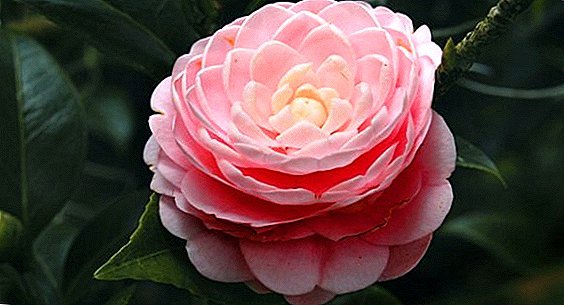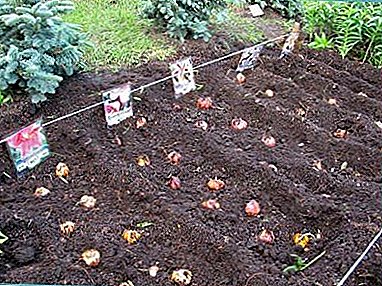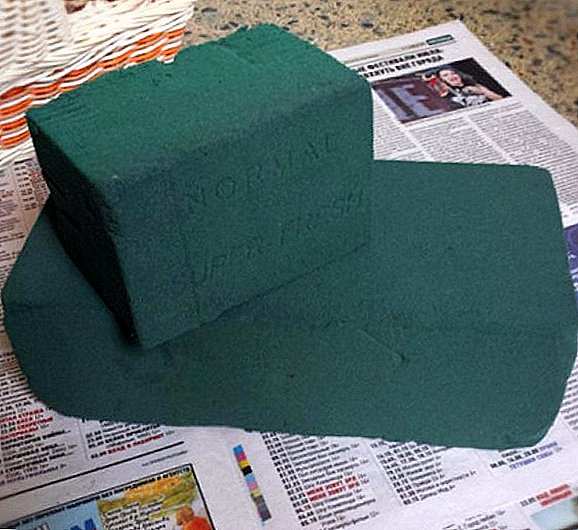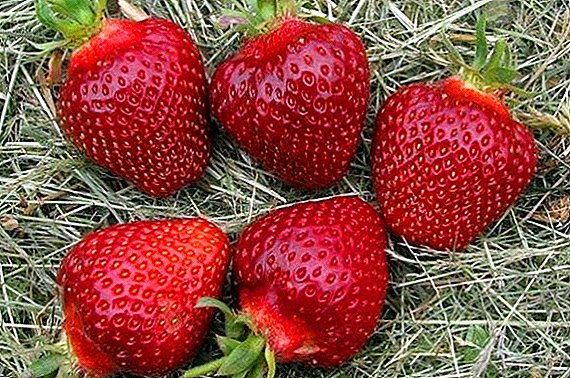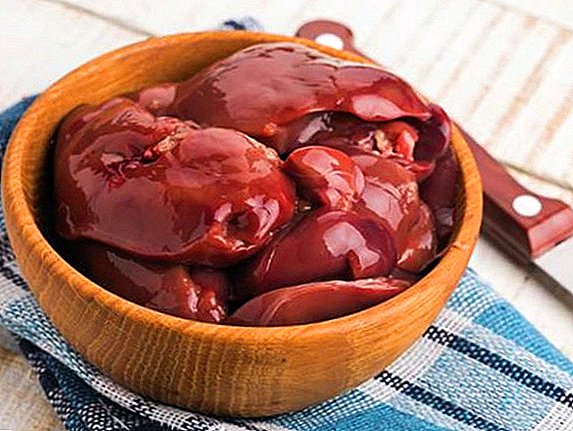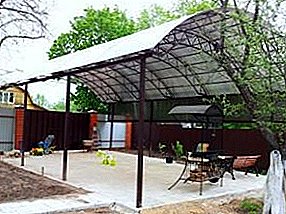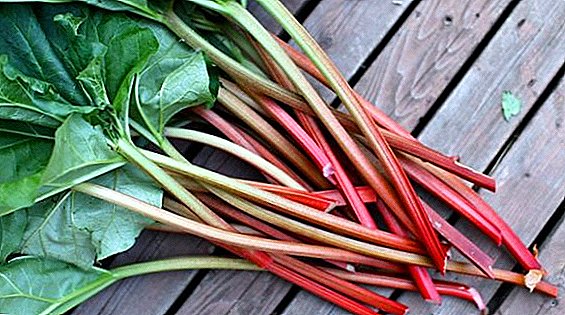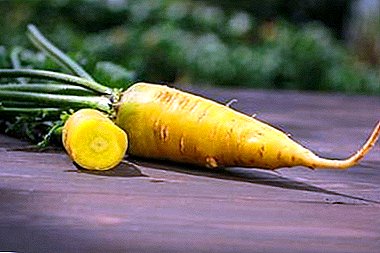
Carrots are a biennial plant of the umbrella family. Its root crop is formed in the first year of life and is immediately consumed.
Carrots are common in almost all countries and include about 60 species. Initially, only leaves and seeds were used for food, and only later they began to grow it for the sake of root vegetables.
In this article we will talk about yellow carrots: the benefits and harms of vegetables, chemical composition, varieties and their characteristics, as well as planting and caring for vegetables.
Brief history of selection
 Previously, yellow carrots were not displayed as a separate variety.. This root vegetable has always been found in the wild. Now there are a number of hybrids that display breeders. Until the 16th century, roots of different colors could be spread, and now this trend is returning.
Previously, yellow carrots were not displayed as a separate variety.. This root vegetable has always been found in the wild. Now there are a number of hybrids that display breeders. Until the 16th century, roots of different colors could be spread, and now this trend is returning.
Breeders from different countries are constantly conducting research on the development of new types and varieties of carrots. There are types of carrots, which are derived as a feed crop for domestic animals. Biologists are constantly working to improve the taste, sweetness, juicy conditions of ripening and storage of carrots.
There are various carrot colors: orange, yellow, purple and white. The most popular is yellow carrot.
What is this vegetable and what does it look like?
- Plant: The tops of a yellow carrot look like a bright green bunch of dissected leaves shaped like a feather.
- Root vegetable: a yellow, elongated root vegetable grows underground.
What is different from other species?

- The yellow carrot differs from other types in color and taste. It is sweeter and slightly different useful properties. The color of the yellow carrot gives xanthophyll pigment.
- Yellow carrots contain less moisture than orange.
- Yellow root vegetables have lutein, which prevents various problems with the cardiovascular system.
- Calorie yellow carrot exceeds orange.
- To grow this variety of carrots need a warmer climate.
Where is growing?
It is best to grow the territory in the south of Russia for growing yellow carrots, but if you create greenhouse conditions for it, you can grow it like the orange one throughout the country.
Most suitable for growing climate:
- Krasnodar region.
- Crimea.
- Rostov and Samara regions.
Even in the cool conditions of Moscow, Leningrad Oblast and Primorsky Krai, carrots are grown on an industrial scale.
Sorta
The most popular varieties of yellow carrots are Mirzoi 304, Yellow Solar and Yellowstone.
Mirzoi 304
Was launched in Uzbekistan. It is distinguished by its rapid germination and maturity (about 100 days). The yield in southern latitudes reaches 6.5 kg per square meter, in the northern regions the yield indicator is 2 times less. The roots are light yellow and yellow, at the base of the root may have a greenish tint.
The shape of the carrot is a wide cylinder with a rounded end. The root diameter is about 3 cm, the length is up to 15 cm. The variety is not stored for a long time, therefore it is used for fresh consumption or preparation of juices.

Solar yellow
Imported variety of yellow carrots. Translated into Russian, the name means "yellow sun". This carrot is bright yellow in the form of spindle. Its length is up to 19 centimeters. The fruits are tasty, juicy and crispy. Ripens quickly (up to 90 days), so this variety belongs to the earliest. This grade is suitable for frying and processing, it is also possible to preserve. Not suitable for fresh storage.

Yellowstone
This variety is suitable for areas of Russia where the soil is loose. More resistant to some diseases of root crops. The fruit is also spindle-shaped, rich yellow in color. Root crops are thin and long (up to 23 cm). The variety is early and gives a rich harvest.

Where to buy planting material?
In Moscow:
- Yellowstone seeds can be ordered from the SEEDSPOST online store. RU at a price of 75 rubles for 0.9 g and in the online store Meda 1000 0.9g - 47 rubles.
- Yellow Solar carrot seeds can be purchased at the Gardens of Semiramid store for 180 rubles for 25 pieces per pack.
In St. Petersburg:
- Seeds of the Yellowstone brand Partner are sold at the Redmarkets Commerce Center 0.5g - 49 rubles.
- Stamps Semko carrots dining Yellowstone 0.9g - 75 rubles.
Chemical composition
The chemical composition of yellow carrots includes vitamins, macro-and micronutrients.
Vitamin content:

- A (183.3 μg).
- B1 (0.1 mg).
- B2 (0.02 mg).
- B3 (PP - 1 mg).
- With (5 mg).
- K (13.2 μg).
- Beta-carotene (1.1 mg).
The content of macronutrients:
- potassium (234 mg);
- calcium (46mg);
- magnesium (26 mg);
- sodium (30 mg);
- phosphorus (40mg).
The composition of the trace element iron (0.6 mg).
Benefit and harm
- Vitamin A contained in carrots has a beneficial effect on eyesight, skin and strengthens the immune system.
- Vitamin B (carotene) has antioxidant properties.
- Vitamin K is responsible for blood clotting in the body. The lack of this vitamin lowers the level of prothrombin in the blood.
Vitamins in carrots play a big role:
- in the prevention of avitaminosis;
- improve heart function;
- have a choleretic and diuretic effect.
There is also harm from eating yellow carrots. It can not be eaten raw when:
- gastric and duodenal ulcer;
- with gastritis;
- with increased acidity of gastric juice and allergies to this product.
Excessive consumption of carrots leads to yellowing of the skin.
Step by Step Growing Instructions
Preparing for landing

- Inventory. If carrots are planted on large areas, then use a seeder. They allow you to evenly distribute the planting material at the same depth and through an equal distance. For small areas use syringes and planters. Their principle of action consists in pushing seeds with the help of a rod and a spring into previously prepared grooves.
- The soil. The soil for planting carrots should always be loose, fertile and light, free from weeds. Before the fall, the landing site is being dug up, and just before the landing, they burst out. It is good if the soil was pre-fertilized with manure.
- Seeds. Seeds before planting are pre-soaked in warm water with the addition of a small amount of manganese (for disinfection) for 3 days. Then the seeds are dried and start planting.
Process
Timing
Carrots are planted in the spring, as soon as the earth thaws and warms up. Biologists recommend sowing as early as possible to reduce the risk of damage to the fruit by pests in the ground.
If planted before winter, it is better to do it in late autumn in early November, before the onset of cold weather. If you plant carrots earlier, the seedlings may germinate and freeze then under the snow.
Scheme
The optimal parameters for planting yellow carrot seeds are as follows:
- bed width - 13-14 cm;
- the number of rows in a bed - 4;
- distance between rows - 20-25 cm;
- distance between seeds - 1.5-2cm;
- seed planting depth - 2 cm.
It is necessary to plant seeds only on a sunny site:
- On a loosened bed, shallow (about 2 cm) grooves 5 cm wide are made.
- Grooves are watered and carrot seeds are laid in them.
- Planted seeds are carefully covered with a mixture of sand and peat.
- Watering from above is not recommended immediately, as the seeds will go deeper into the ground.
Care
 Carrots germinate very slowly - about two to three weeks. Shoots carrots can withstand slight frost.
Carrots germinate very slowly - about two to three weeks. Shoots carrots can withstand slight frost.
- During the germination of seeds of yellow carrots need to regularly pluck the weeds.
- The soil must be podpushivyu as needed.
- As soon as the first two leaves appear, the carrots must be thinned so that the distance between the sprouts is 3 cm.
- When two more leaves grow, the distance should be 5-6 cm.
Suitable microclimate
A suitable microclimate is a temperature of 16 degrees or more, moderate humidity and light loose soil with good access to oxygen:
- For grade Mirzoi 304 Need a temperature not lower than 16 degrees. In the first growth period, high humidity is important for this variety.
- For grade Yellow Solar need air temperature from 18 degrees and above.
Watering
We can not allow a dry crust to form on the ground. It is not allowed to water with cold water, the water must have an ambient temperature.
Top dressing
Yellow carrots are fed for the first time 3 weeks after emergence and the second time two months later.

- From organic fertilizer You can use chicken manure (at the rate of 1:30) and cow dung (1:10) in a bucket of water. Add 1 cup of wood ash to the mixture.
- From mineral fertilizers use nitrophoska at a concentration of 1 tablespoon per bucket of water. Also prepare a solution of 20 g of saltpeter, 15 g of urea and double superphosphate in a bucket of water.
Soil loosening
To loosen the soil should be regularly, one day after watering throughout the entire period of growing carrots.
Weeding
Weeding beds should be as the culture grows. Do not allow a high planting density, as the roots will grow small.
Mulching
For mulching apply chopped grass or sawdustwhich are laid out between the beds with a layer of 10-15 cm. This will support the microclimate and reduce the frequency of watering and weeding.
Harvesting and storage of the crop
Yellow carrots belong to the early varieties, so the harvest can be started in June. Carrots are pulled out of the ground for the tops, shaken off and examined.
Whole root vegetables are dried, cleaned from tops and stored in storage. Damaged go for recycling.
Carrots are stored in cellars in wooden or plastic containers in several layers. Wet sand is poured between the layers.
Agricultural engineering errors
- Thorough thinning rows.
- Insufficient watering.
- Unsuitable soil.
- Late harvest.
Diseases, pests and their prevention
- Yellow carrots are often affected by carrot fly. A sign of defeat - twisted leaves tops. This insect appears in overmoistened and densely grown beds. Get rid of the pest with the help of chemicals, such as Aktara, Decis.
- Also, carrots suffer from phimosis or alternaria. In these cases, helps 1% solution Bordeaux. For prophylaxis, it is not allowed to overmoisten the soil and thin out the plants in time.
Eating carrots
Carrots can be eaten raw, boiled, frozen and dry:

- They make a salad from raw grated carrots, squeeze carrot juice.
- Boiled carrots are added to many salads.
- Make carrots for the first dishes from carrots.
- Fresh juice helps with constipation, vitamin deficiency, anemia, sore throat, to clean the liver and gallbladder.
Yellow carrots are low-calorie foods.therefore, this root vegetable can be consumed in large portions, and a rich vitamin composition will not be harmful to health.
In addition to cooking, vegetable is used in cosmetology and medicine. Daily use in the diet of this root perfectly affects the state of health and helps to get rid of and prevent many diseases.


